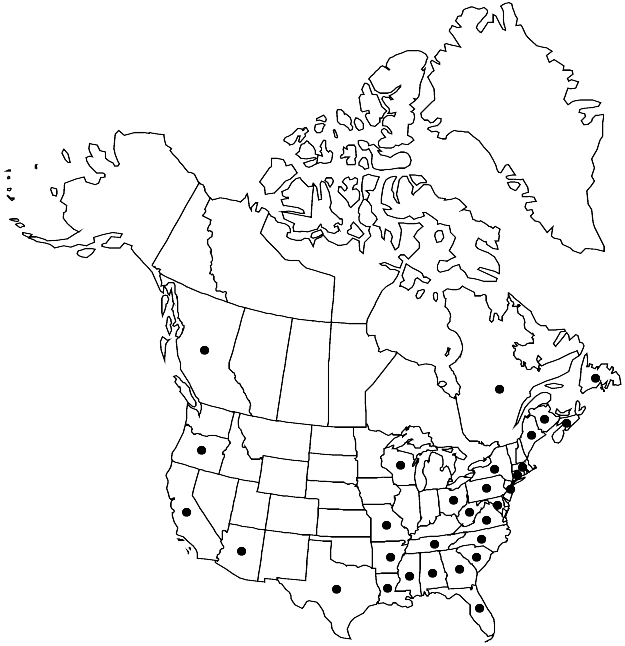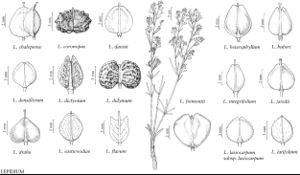Lepidium didymum
Syst. Nat. ed. 12, 2: 433. 1767.
Mant Pl. 1: 92. 1767.
Annuals; (fetid); glabrous or pilose. Stems few to several from base, erect to ascending or decumbent, branched distally, 1–4.5 (–7) dm. Basal leaves (soon withered); not rosulate; petiole 0.5–4 (–6) cm; blade 1-pinnatisect or 2-pinnatisect, 1–6 (–8) cm, margins (of lobes) entire or dentate (sometimes deeply lobed). Cauline leaves shortly petiolate to subsessile; blade similar to basal, smaller and less divided distally, lobes lanceolate to oblong or elliptic, 1.5–3.5 (–4.5) cm ×5–12 mm, base not auriculate, margins (of lobes) entire, serrate, or incised. Racemes elongated in fruit; rachis glabrous or pubescent, trichomes straight, cylindrical. Fruiting pedicels divaricate to horizontal, straight slightly recurved, (terete), 1.4–2.5 (–4) × 0.15–2 mm, glabrous or sparsely pubescent adaxially. Flowers: sepals (tardily deciduous), ovate, 0.5–0.7 (–0.9) mm; petals white, elliptic to linear, 0.4–0.5 × ca. 0.1 mm, claw absent; stamens 2, median; filaments 0.3–0.6 mm; anthers 0.1–0.2 mm. Fruits schizocarpic, didymous, 1.3–1.7 × 2–2.5 mm, apically not winged, apical notch 0.2–0.4 mm deep; valves thick, rugose, strongly veined, glabrous; style absent or obsolete, included in apical notch. Seeds ovate, 1–1.2 × 0.7–0.8 mm. 2n = 32.
Phenology: Flowering Mar–Jul.
Habitat: Roadsides, waste areas, lawns, pastures, fields, gardens, disturbed areas
Elevation: 0-1000 m
Distribution

Introduced; B.C., N.B., Nfld. and Labr. (Nfld.), N.S., Que., Ala., Ariz., Ark., Calif., Conn., Fla., Ga., La., Maine, Md., Mass., Miss., Mo., N.J., N.Y., N.C., Ohio, Oreg., Pa., S.C., Tenn., Tex., Va., W.Va., Wis., South America, also in Mexico (Sinaloa), Central America (Honduras), Europe, Asia, s Africa, Australia
Discussion
Selected References
None.
Lower Taxa
"elongated" is not a number."thick" is not a number."dm" is not declared as a valid unit of measurement for this property."dm" is not declared as a valid unit of measurement for this property.
